I’m not one to make snap decisions about home upgrades, but let me tell you, Interstate Windows won me over. After months of research, endless quotes, and more window samples than I care to admit, I landed on Interstate, and I’m thrilled with my choice.
If you’re hunting for replacement windows that balance quality, affordability, and style, Interstate is a solid contender.
In this article, I’ll share my journey with these windows, break down the pros and cons, compare them to other brands, and toss in some maintenance tips to keep them shining. Trust me, you’ll want these in your home.
My Experience With Interstate Windows
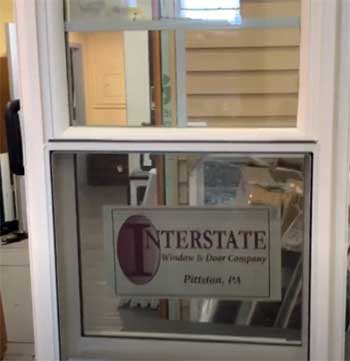
When I decided to replace the old, drafty windows in my 1970s colonial, I was overwhelmed.
My house in Pennsylvania was screaming for an upgrade—think creaky wooden frames and single-pane glass that did nothing for energy bills.
I got quotes from five companies, including big names like Pella and Andersen, but Interstate caught my eye.
Why?
The local installer wasn’t pushy, the price felt reasonable, and the specs on their 5200 series double-hung windows were impressive.
The process started with a consultation at my home. The rep showed up with samples, walked me through the composite and vinyl options, and didn’t try to upsell me on features I didn’t need. I chose the 5200 series for their energy efficiency and sleek design.
The installation crew was in-house, not subcontractors, which gave me peace of mind. They wrapped up six windows in a day, cleaned up thoroughly, and even showed me how to operate the tilt-in sashes for easy cleaning.
A year later, I’m still impressed. My living room feels brighter with the larger glass area, and my energy bills dropped noticeably—about 15% less last winter. The windows feel sturdy, operate smoothly, and haven’t shown a hint of wear.
My only hiccup was a minor delay in delivery due to a custom color I picked (yep, I went for a bold slate gray), but the company kept me in the loop. Overall, Interstate delivered on their promise, and I’m a happy homeowner.
Pros of Interstate Windows
- Solid Construction That Feels Premium

Interstate windows, especially their 5200 and 6800 series, are built to last.
The composite frames in the 5200s I installed are a blend of wood fibers and polymers, giving them a wood-like look without the upkeep.
They’re sturdier than the cheap vinyl windows I saw at big-box stores, and the welds on the frames are seamless.
You can feel the quality when you open and close them—no wobbling or sticking. I’ve had neighbors comment on how sharp they look, and I don’t worry about them warping in humid summers.
- Energy Efficiency That Saves You Money
If you’re like me, you cringe at high utility bills. Interstate’s windows are Energy Star-certified, with low U-factors (around 0.27 for the 5200 series) and solid solar heat gain coefficients (SHGC). In plain English, they keep heat in during winter and block it in summer.
My home stays comfortable year-round, and I’ve noticed a real difference in my gas bill. The double-pane glass with argon gas filling and low-E coatings isn’t just marketing fluff—it works. I compared specs to Pella’s mid-range vinyl, and Interstate holds its own without the premium price tag.
- Customization Options Galore
I’m picky about aesthetics, and Interstate didn’t disappoint. You can choose from vinyl or composite frames, a range of colors (including custom options like my slate gray), and various grille patterns. Want a modern look? Go gridless. Love that traditional vibe? Add colonial grilles.
They even offer triple-pane glass for extra insulation, though I stuck with double-pane to save cash. The flexibility let me match my home’s style perfectly, and the custom color hasn’t faded a bit in a year of harsh sunlight.
- Impressive Warranty Coverage
Nobody wants to think about window failures, but Interstate’s warranty has you covered. Their lifetime warranty on vinyl and composite frames is legit—it lasts as long as you own your home.
Glass breakage, even from a stray soccer ball, is included, which is a big deal if you have kids or clumsy neighbors. The only catch is labor coverage, which drops after a year, but I found that standard across brands. Compared to Andersen’s prorated glass warranty, Interstate’s feels more generous.
- Larger Glass Area for Brighter Rooms
One thing I love is how much light these windows let in. Interstate’s design maximizes glass space, especially compared to bulkier vinyl frames like Simonton’s. My living room went from dim to dazzling, and it feels bigger without changing the window size.
If you’re comparing to Okna, you’d need to measure samples side by side, but Interstate’s glass area is noticeably larger than many competitors. It’s a small detail that makes a big difference in how your home feels.
Not-So-Good Parts of Interstate Windows
- Limited Availability in Some Regions

Here’s the rub: Interstate windows aren’t available everywhere.
They’re primarily sold on the East Coast and Midwest, so if you’re in California or Texas, you’re out of luck.
I’m in Pennsylvania, so it wasn’t an issue, but I had a friend in Colorado who couldn’t get them.
This regional limitation is a bummer if you fall in love with their specs but can’t find a local dealer. You might need to pivot to a national brand like Marvin or Pella.
- Custom Orders Can Delay Installation
I mentioned my slate gray windows earlier—they look amazing, but the custom color added about three weeks to the delivery time. Standard colors like white or beige ship faster, but if you’re set on something unique, you’ll need patience.
Compared to big-box store windows that arrived in days, Interstate’s lead time felt long. Plan ahead if you’re on a tight schedule, especially for larger projects.
- Composite Windows Cost More Than Vinyl
Interstate’s composite windows, like my 5200s, are pricier than their vinyl 6800 series. The composite option is about 20% more expensive than vinyl, which can sting if you’re on a budget.
I compared quotes, and Interstate’s composites were cheaper than Andersen’s Fibrex but still more than basic vinyl brands like American Craftsman. If cost is your main concern, you might lean toward vinyl to save a few bucks.
- Warranty Proration on Glass
While the lifetime warranty on frames is great, the glass warranty has a catch. After a certain period (usually 10 years), it’s prorated, meaning you might pay a portion of the replacement cost. This isn’t unique to Interstate—many brands do this—but it’s worth noting.
I haven’t had issues with my glass, but if you’re planning for the long haul, factor this in. Pella and Andersen have similar proration policies, so it’s not a dealbreaker, but it’s not perfect.
Maintenance Tips For Interstate Windows
- Regular Cleaning Keeps Them Sparkling
Interstate windows are low-maintenance, but a little cleaning goes a long way. I clean mine every few months with a mild dish soap and water solution. Use a soft cloth or sponge to avoid scratching the glass or frames.
For the tilt-in sashes, pop them out and clean both sides—it’s super easy and keeps dirt from building up in the tracks. Avoid harsh chemicals like ammonia; they can damage the low-E coating. A quick rinse with a hose works wonders for exterior grime, especially after pollen season.
- Check and Lubricate Moving Parts
The smooth operation of my windows is a highlight, but I learned to keep the tracks and sashes lubricated. Once a year, I apply a silicone-based lubricant (not WD-40, which can attract dust) to the sash tracks and hinges.
It takes five minutes and keeps everything gliding like new. Check the weatherstripping too—Interstate’s is durable, but if it looks worn, contact your installer for a replacement. This prevents drafts and maintains energy efficiency.
- Inspect Seals and Caulking
To keep those energy-saving benefits, I check the caulking around my windows annually. Look for cracks or gaps where air could sneak in. If you spot any, a tube of exterior-grade silicone caulk from the hardware store will do the trick.
I also inspect the seals around the glass for signs of wear, though I haven’t had issues yet. If you notice fogging between panes, it could mean a seal failure—call Interstate’s warranty team right away. Staying proactive keeps your windows performing at their best.
- Protect Custom Colors from Fading
My slate gray windows are holding up great, but custom colors can be prone to fading if neglected. I use a UV-protectant spray designed for vinyl or composite surfaces once a year. It’s like sunscreen for your windows and helps preserve the color.
Also, avoid pressure washing too close to the frames—it can damage the finish. A gentle hose-down is usually enough. If you live in a sunny area, this step is crucial to keep your windows looking fresh.
- Winter Prep for Energy Efficiency
Living in Pennsylvania, I deal with cold winters, so I make sure my windows are ready. Before the first frost, I check for drafts by holding a candle near the edges (carefully!). If the flame flickers, there might be a gap. A quick caulk job fixes it.
I also clean the glass before winter to maximize sunlight, which helps warm the house naturally. Interstate’s insulation is top-notch, but these small steps boost efficiency even more.
Comparing Interstate Windows To Other Brands
I spent weeks researching windows, and Interstate stood out among competitors like Thermo-Tech Windows, Universal Windows Direct, Mathews Brothers Windows, and Ply Gem Windows. Here’s how they compare, broken down by key factors.
- Interstate Vs. Thermo-Tech Windows
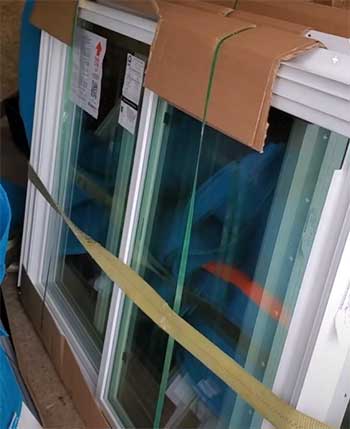
Thermo-Tech’s vinyl windows are known for their energy efficiency, boasting U-factors as low as 0.25, slightly better than Interstate’s 0.27 for the 5200 series.
Their focus on insulation is great for cold climates, but their designs are less customizable—no composite options or bold colors like my slate gray Interstate windows.
Thermo-Tech’s frames also feel bulkier, reducing glass area compared to Interstate’s sleek design.
Price-wise, Thermo-Tech is about 10% cheaper, but their warranty only covers frames for 20 years, not a lifetime like Interstate’s.
If energy savings are your top priority, Thermo-Tech is a contender, but I prefer Interstate’s style and warranty.
- Interstate Vs. Universal Windows Direct
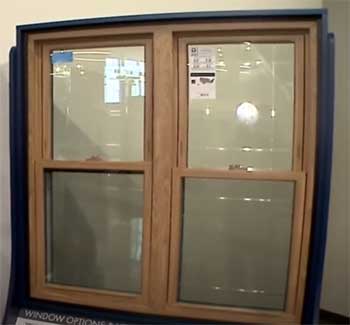
Universal Windows Direct offers affordable vinyl windows, often 15-20% cheaper than Interstate’s 6800 vinyl series.
Their UniShield line has solid energy ratings (U-factor around 0.28), but the construction feels less premium than Interstate’s composite 5200s.
Universal’s customization is limited—fewer grille patterns and no custom colors.
Their lifetime warranty matches Interstate’s, but glass breakage isn’t included, which was a dealbreaker for me with kids around.
Universal is great for budget shoppers, but Interstate’s durability and larger glass area make it worth the extra cost for me.
- Interstate Vs. Mathews Brothers Windows
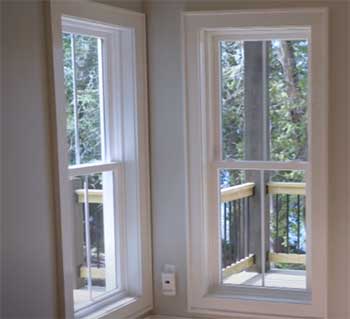
Mathews Brothers, another East Coast brand, produces high-quality vinyl windows with a reputation for durability.
Their Sanford series has a U-factor of 0.26, edging out Interstate’s 0.27, and their frames are sturdy.
However, Mathews Brothers’ designs are more traditional, with fewer modern options like Interstate’s gridless look.
Pricing is similar, but Mathews Brothers’ warranty is less comprehensive—no glass breakage coverage and a 10-year labor guarantee compared to Interstate’s lifetime frame warranty.
If you want classic styling, Mathews Brothers is solid, but Interstate’s versatility and brighter glass area won me over.
- Interstate Vs. Ply Gem Windows
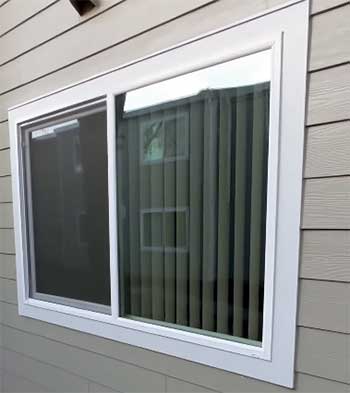
Ply Gem’s vinyl windows are widely available and budget-friendly, often 25% less expensive than Interstate’s composites.
Their Pro Series has decent energy performance (U-factor around 0.29), but the frames feel thinner than Interstate’s, and air infiltration rates are higher.
Ply Gem offers good customization, including colors, but their warranty is weaker—20 years on frames and prorated glass after five years.
Interstate’s lifetime warranty and sturdier construction feel like a better long-term investment.
If you’re looking for cheap and cheerful, Ply Gem works, but Interstate’s quality and efficiency are hard to beat.
Interstate strikes a balance of quality, style, and value. It’s not the cheapest option, but its composite frames, energy efficiency, and generous warranty make it a standout compared to Thermo-Tech’s efficiency focus, Universal’s budget appeal, Mathews Brothers’ traditional designs, and Ply Gem’s affordability.
Frequently Asked Questions (FAQ)
Interstate offers some of the best value, with composite and vinyl options that balance quality and cost. Their 5200 series, like mine, delivers solid energy efficiency and durability at a mid-range price. Simonton’s vinyl windows are a close contender for budget-conscious buyers, while Andersen’s Fibrex windows are great if you can afford the premium. It depends on your budget and priorities, but Interstate’s versatility makes it a strong all-around pick.
Durability depends on material and installation. Andersen and Pella’s composite and wood-clad windows can last 30+ years with proper care, but they’re expensive. Interstate’s composite and vinyl windows are built to last 25-30 years, especially with their lifetime frame warranty. Vinyl brands like Okna and Simonton also claim similar lifespans. Good installation and maintenance are key—cheap windows like Window World’s may not last as long if poorly installed.
Okna and Simonton are often praised for their high-quality vinyl windows, with excellent energy ratings and durability. Interstate’s 6800 vinyl series is a strong competitor, offering low air infiltration (0.05) and a lifetime warranty. I chose Interstate’s composite 5200s, but their vinyl line is nearly as efficient as Okna’s and more customizable than Simonton’s. For vinyl, it’s a toss-up, but Interstate’s warranty and glass area give it an edge.
Yes, Window World windows are generally considered builder-grade. They’re affordable and functional but use thinner vinyl frames and have higher air infiltration rates than premium brands like Interstate or Okna. Their warranties are less comprehensive, and the quality feels basic. They’re a good choice for rentals or short-term projects, but for long-term value, I’d recommend stepping up to Interstate or Simonton.
Conclusion: Interstate Windows Are a Smart Buy
After living with Interstate windows for a year, I can confidently say they’re a fantastic choice. They’ve transformed my home—brighter, cozier, and cheaper to heat. With solid construction, great energy savings, and a strong warranty, they’re hard to beat.
Whether you’re replacing a few windows or your whole house, Interstate offers quality without breaking the bank. Trust me, you’ll love the look and feel of these windows in your home.
